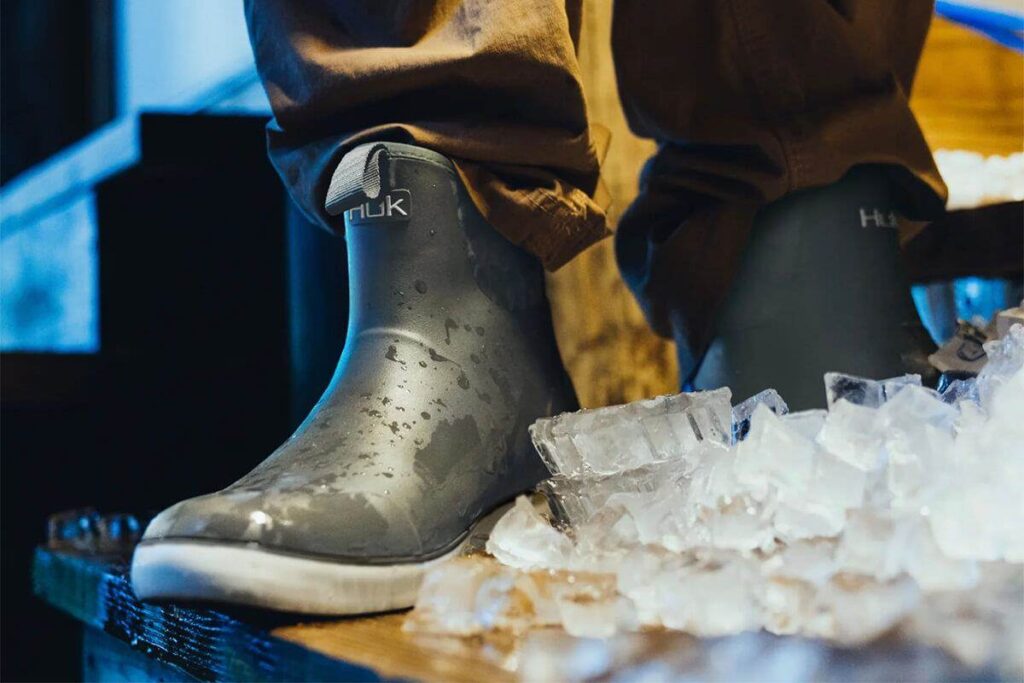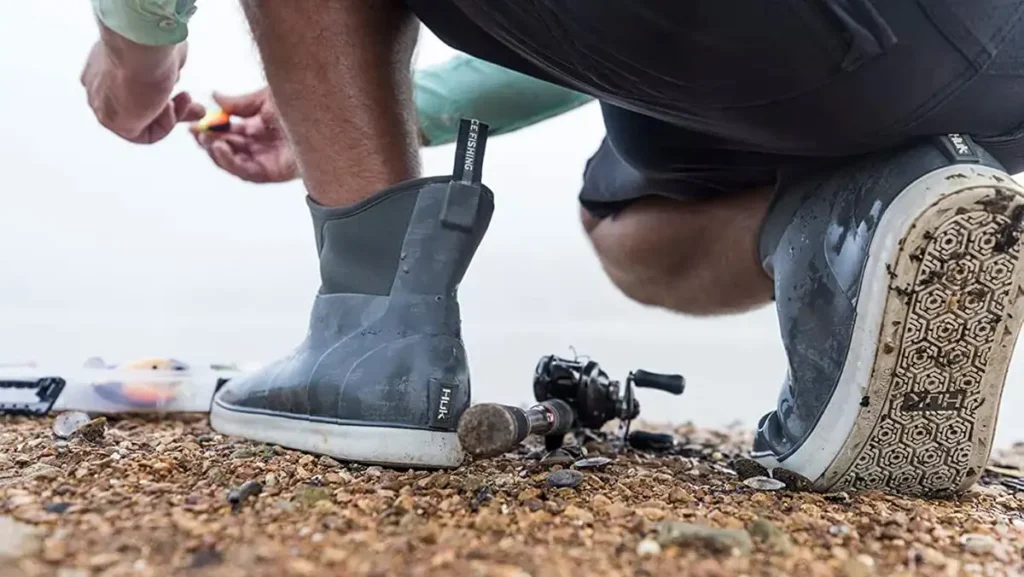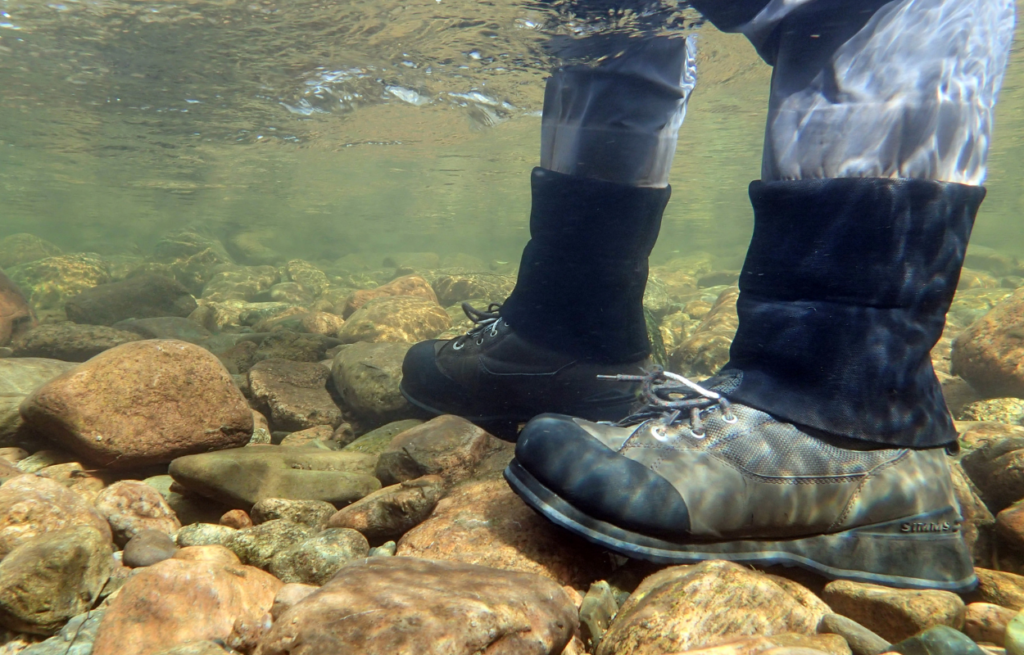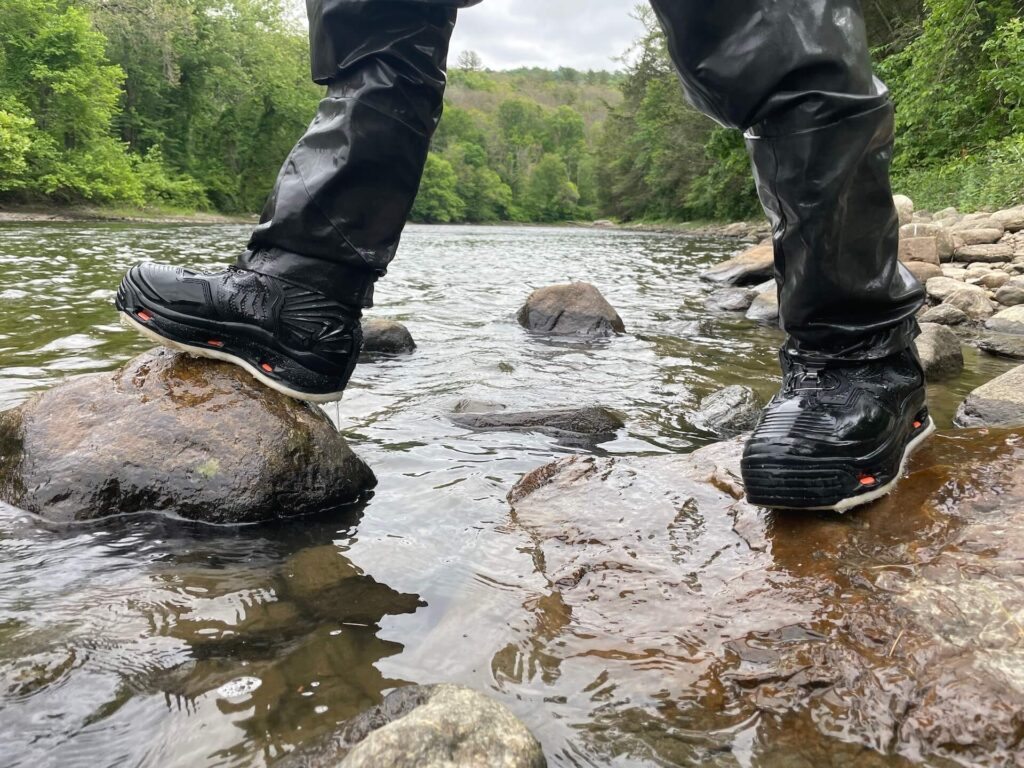The right footwear makes all the difference for those who love casting a line, braving the elements, and enjoying hours out on the water. It’s not just about staying dry; comfort and durability in fishing footwear let you focus on the experience rather than your gear. The right boots take you from rocky shores to muddy banks without trouble and protect against slips, cold, and other elements that come with fishing.
Key Points:
- Different terrains call for different types of fishing boots.
- High ankle support adds stability on slippery rocks.
- Insulation can be essential for cold-weather anglers.
- Waterproofing keeps your feet dry during long hours.
- Good grip helps prevent slipping on wet surfaces.
Choosing the Right Type of Footwear

Finding the right footwear can feel overwhelming, but it starts by considering the environment where you’ll fish. Boots that work for riverbanks might not fit the needs of a deep-sea trip, and wading in muddy swamps demands a different set of features than fishing on smooth lakeshores. The material, height, insulation, and grip all vary based on location, weather, and water type.
For those planning to fish in areas with tricky terrain, boots with reinforced ankle support give stability. High ankle support keeps you steady on uneven ground, preventing ankle rolls, which is especially helpful if you’re carrying gear or navigating rocks.
In marshy or muddy conditions, durable soles are essential to avoid getting stuck or slipping. For anglers looking for versatile, high-performance options that work in a range of environments, consider the https://www.flopindustries.com/products/flop-deck-boots.
Waterproofing and Weather Protection

Staying dry is a must. Whether it’s a light drizzle or full immersion, waterproofing makes or breaks the experience. Water-resistant materials like neoprene or treated leather keep water out while allowing some air circulation to prevent sweaty, uncomfortable feet. Even in warmer months, good waterproofing keeps dew and splashes at bay, allowing you to enjoy your trip.
Colder climates require insulation. Insulated boots provide warmth in icy waters or early spring fishing trips. Consider boots with removable liners for versatility, allowing you to adjust the warmth level as needed. This feature can be a game-changer for those who love fishing throughout all four seasons.
Traction and Grip on Wet Surfaces
For anyone heading out to a rocky shore or fast-moving stream, grip should be top of mind. Wet rocks, slippery mud, and algae-covered surfaces create a high risk of slipping. Boots with rubber soles, or those made specifically for fishing, typically offer excellent traction on all surfaces. A tread pattern with deep lugs can provide even more stability, anchoring your foot with each step.
If you’re fishing from a boat or shoreline, non-marking rubber soles can be helpful to avoid scuff marks while ensuring a solid grip. This type of sole also offers good traction on both wet and dry surfaces, giving you more freedom to move comfortably and securely.
Considering Weight and Flexibility

Heavy boots can slow you down and cause discomfort. Lightweight designs, especially those made with synthetic materials, offer an advantage. Flexibility also matters, especially if you plan on hiking to remote fishing spots or walking across mixed terrain. Stiff boots might protect well but can limit movement, which is crucial in some fishing environments.
Flexible soles are beneficial when climbing rocks or navigating tricky paths. Rubber or composite materials tend to be lighter and add flexibility, allowing for more natural foot movement without compromising support.
Top Boot Features to Consider
Here’s a quick checklist of must-have features when selecting your boots:
- Waterproof Material: Essential for keeping feet dry and comfortable.
- Good Traction: Look for a sole with deep treads for grip on rocks or wet surfaces.
- Insulation Options: Choose insulated models for cold climates.
- Lightweight Build: Reduces fatigue over long days.
- High Ankle Support: For those navigating rocky or uneven ground.
Practical Advice for Long-Lasting Footwear

- Regular Cleaning: Rinse boots with freshwater after each trip to remove dirt and salt.
- Conditioning Leather: For leather boots, use a waterproof conditioner to maintain material flexibility.
- Drying Properly: Allow boots to dry naturally after every use to avoid odors and material breakdown.
- Inspecting Soles: Check for wear and tear in the tread for continued traction.
- Storing Appropriately: Keep boots in a cool, dry place to maintain their shape and durability.
Frequently Asked Questions
- What are the best materials for fishing boots? Waterproof materials like neoprene, rubber, and treated leather perform well, each offering different benefits.
- Do I need insulated boots for summer fishing? Typically no, but if you’re fishing in cold water or cooler climates, light insulation may still be helpful.
- How high should my fishing boots be? High-ankle boots offer more support on rocky or uneven ground, while shorter boots are ideal for flat terrains.
- Should I buy a size up for thick socks? Consider half a size up if you plan to wear thick socks, especially for colder fishing trips.
- Are all fishing boots waterproof? No, some boots only have water-resistant features, so always check the specifications for full waterproofing.
Conclusion
Quality footwear makes a huge difference when it comes to enjoying your time on the water. The right pair offers comfort, support, and protection. By choosing boots that fit your fishing environment and personal needs, you set yourself up for a comfortable, memorable experience. Whether it’s for cold, rocky terrains or calm lakeside shores, finding the perfect pair ensures you’re fully prepared, ready to focus on what really matters—the thrill of fishing.







